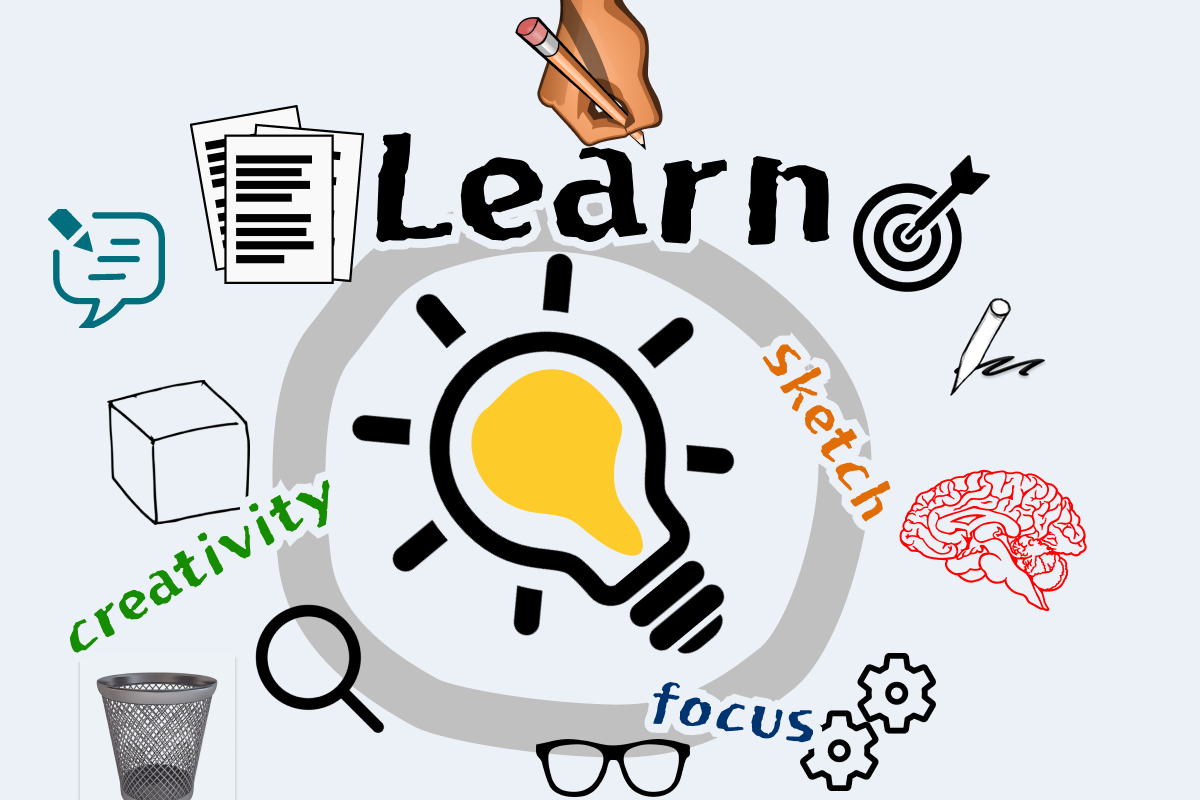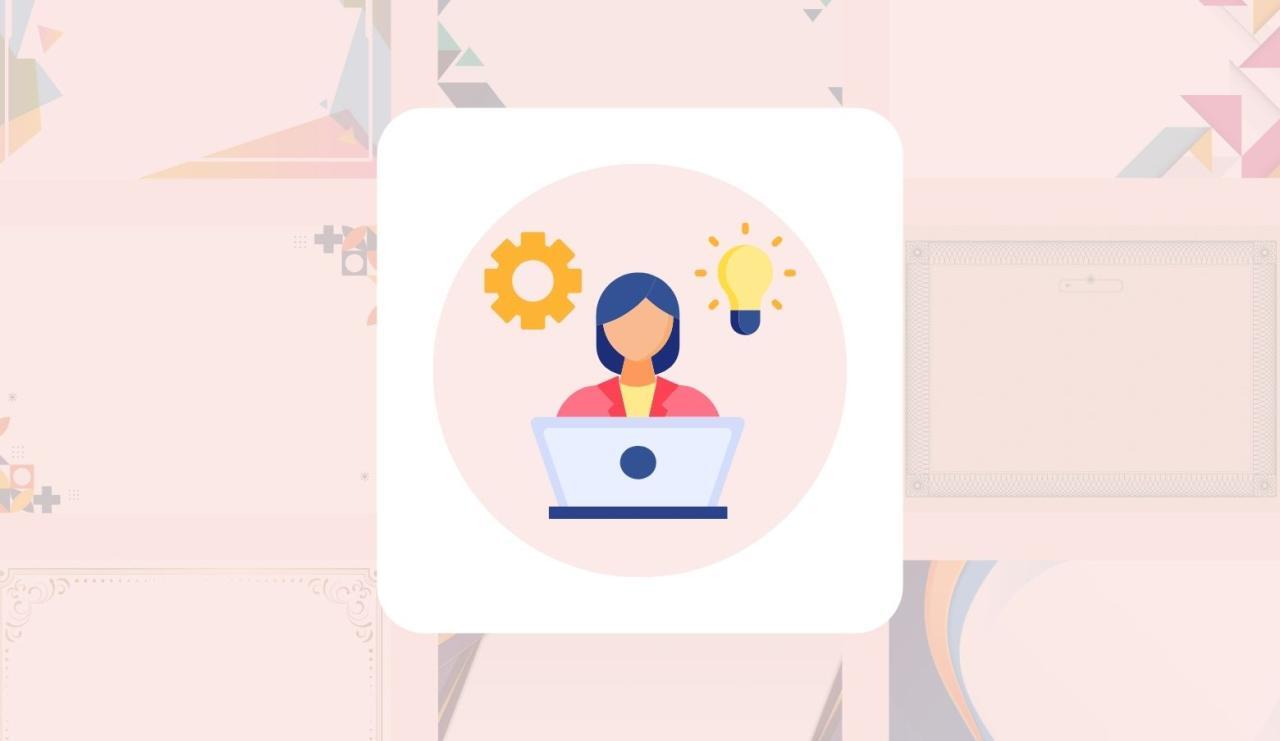Embark on a journey of continuous growth and skill enhancement. This comprehensive guide provides a roadmap for identifying learning opportunities, cultivating a growth mindset, and mastering effective learning strategies. From formal courses to self-directed study, we’ll explore various avenues for expanding your knowledge and refining your abilities. We’ll delve into the importance of embracing challenges and turning setbacks into learning experiences, equipping you with the tools to stay motivated and adapt to changing circumstances.
This guide provides a structured approach to lifelong learning, outlining practical methods for developing specific skills, applying knowledge in real-world contexts, and maintaining a consistent learning momentum. We will examine diverse learning styles, effective time management techniques, and the crucial role of feedback in identifying areas for improvement. Ultimately, the goal is to empower you to become a proactive learner and adept professional.
Identifying Learning Opportunities
Continuous learning is crucial for professional growth and personal development. Identifying and leveraging suitable learning opportunities allows individuals to acquire new skills, adapt to evolving industry demands, and enhance their overall capabilities. This process involves recognizing personal skill gaps, exploring diverse learning avenues, and actively participating in professional development programs.Recognizing personal skill gaps is the first step towards effective learning.
By honestly assessing current capabilities and desired outcomes, individuals can pinpoint areas needing improvement. This self-reflection is essential for selecting learning activities that directly address these gaps and contribute to the desired skill development.
Learning Avenues
Various avenues exist for acquiring new knowledge and skills. These include formal courses, online resources, and self-directed study. Each approach offers distinct benefits and drawbacks, allowing individuals to choose the most appropriate method based on their needs and circumstances.
- Formal courses, such as university programs, workshops, and seminars, provide structured learning experiences with certified instructors and curriculum. These programs often offer a comprehensive understanding of specific subjects and provide opportunities to network with peers and professionals.
- Online resources, encompassing online courses, tutorials, and educational platforms, offer flexible learning options. These platforms often provide cost-effective and accessible learning experiences, enabling individuals to learn at their own pace and convenience. Examples include platforms like Coursera, edX, and Udemy.
- Self-directed study involves independent research and practice to develop specific skills. This method allows individuals to tailor their learning experience to their unique needs and preferences. However, it necessitates a high level of self-discipline and motivation.
Recognizing Skill Gaps
Identifying skill gaps is a critical component of effective learning. This involves honestly evaluating current skill levels against industry standards and personal career goals. Tools like skill assessments, performance reviews, and self-reflection exercises can be instrumental in this process. For instance, a software engineer might realize a gap in their cloud computing knowledge after reviewing job descriptions and industry trends.
Leveraging Professional Development Opportunities
Professional development opportunities often arise within organizations. These opportunities may include internal training programs, mentorship programs, conferences, and industry events. Actively seeking and participating in these opportunities can significantly enhance professional skills and career advancement. For example, a company may offer a leadership training program that enhances the leadership skills of its employees.
Comparing Learning Methods
The following table compares different learning methods, considering cost, time commitment, and potential impact.
| Learning Method | Cost | Time Commitment | Potential Impact |
|---|---|---|---|
| Formal Courses | Medium to High | High (often demanding significant time investment) | High (often provides comprehensive knowledge and networking opportunities) |
| Online Resources | Low to Medium | Variable (can be flexible or demanding) | Medium to High (depends on the course quality and individual effort) |
| Self-Directed Study | Low | Variable (depends on the individual’s commitment) | Medium (requires high self-discipline and motivation) |
Cultivating a Growth Mindset
Embracing challenges and viewing setbacks as opportunities for learning is crucial for continuous skill improvement. A growth mindset, characterized by a belief in the development of abilities through dedication and hard work, fosters a proactive and resilient approach to learning. This mindset is a powerful tool for navigating the complexities of lifelong learning and achieving personal and professional goals.A growth mindset distinguishes itself from a fixed mindset by emphasizing the potential for improvement and learning from mistakes.
Individuals with a growth mindset see challenges as opportunities for growth rather than threats to their inherent abilities. This proactive attitude fosters a positive and dynamic learning environment.
Importance of Embracing Challenges
Challenges are inevitable in the pursuit of skill development. Viewing challenges as opportunities to learn and grow, rather than obstacles to overcome, is a hallmark of a growth mindset. This proactive approach shifts the focus from fear of failure to a focus on the process of learning and improvement. By embracing challenges, individuals unlock their potential for advancement and personal growth.
Techniques for Fostering a Positive Attitude Toward Continuous Learning
Cultivating a positive attitude towards continuous learning involves adopting strategies that promote resilience and a willingness to learn from setbacks. These strategies include focusing on the process of learning, celebrating small victories, and seeking constructive feedback. This proactive approach to learning promotes a strong foundation for lifelong development.
- Focus on the Process of Learning: Concentrating on the process of learning, rather than solely on the outcome, fosters a deeper understanding and a more positive outlook on learning. By appreciating the journey of discovery, individuals develop a stronger sense of accomplishment and a greater appreciation for the learning experience itself.
- Celebrate Small Victories: Acknowledging and celebrating small successes along the learning path reinforces the positive aspects of the process. This reinforces the idea that progress, even in small increments, is valuable and worth celebrating. This builds confidence and motivation.
- Seek Constructive Feedback: Actively seeking and utilizing constructive feedback from others is essential for continuous improvement. Feedback provides valuable insights into areas for growth and development, enabling individuals to refine their skills and approach.
Reframing Negative Thoughts
Negative thoughts can significantly hinder the learning process. A crucial aspect of cultivating a growth mindset involves actively reframing negative thoughts into positive, growth-oriented ones. This proactive approach enables individuals to approach challenges and setbacks with a more resilient and adaptive perspective.
- Example 1: “I failed the exam.” (Negative) can be reframed as “I learned a lot from this exam. I understand where I need to focus my study efforts.” (Positive)
- Example 2: “I can’t do this.” (Negative) can be reframed as “This is challenging, but I can learn how to do it with practice.” (Positive)
Fixed Mindset vs. Growth Mindset
| Characteristic | Fixed Mindset | Growth Mindset |
|---|---|---|
| View of Abilities | Abilities are innate and unchangeable. | Abilities can be developed through dedication and hard work. |
| Challenges | Challenges are threats to abilities. | Challenges are opportunities for growth. |
| Effort | Effort is seen as a sign of inadequacy. | Effort is essential for mastery and learning. |
| Setbacks | Setbacks are proof of limitations. | Setbacks are opportunities for learning and adjustment. |
| Impact on Learning | Limited learning and potential for stagnation. | Continuous learning and potential for mastery. |
Effective Learning Strategies
Cultivating a robust learning approach extends beyond identifying opportunities and fostering a growth mindset. Crucial to sustained improvement is implementing effective learning strategies that optimize your engagement and retention. These techniques enhance your capacity to absorb information, apply knowledge, and ultimately achieve your learning objectives.Effective learning strategies are not a one-size-fits-all solution. Understanding and tailoring your approach to different learning styles and utilizing time management techniques are pivotal to maximizing your learning experience.
Active learning methods, such as note-taking, summarizing, and spaced repetition, play a significant role in reinforcing knowledge and improving recall.
Active Learning Techniques
Active learning methods are essential for deep understanding and retention. Engaging actively with the material through techniques like note-taking, summarizing, and spaced repetition facilitates long-term knowledge acquisition. These methods transform passive reception into active processing, leading to improved comprehension and application.
- Note-Taking: Effective note-taking involves more than simply copying down information. It requires summarizing key concepts, identifying connections between ideas, and incorporating personal reflections. Strategies such as the Cornell method, outlining, or mind mapping can enhance note-taking efficiency. Careful organization of notes facilitates later review and reinforces learning.
- Summarization: Summarizing involves condensing complex information into concise, coherent points. This process forces you to identify essential concepts and connections, improving comprehension and memory. Regular practice in summarizing different texts, lectures, or discussions will enhance your ability to extract key information and connect ideas.
- Spaced Repetition: This technique involves reviewing material at increasing intervals. By revisiting information at strategically spaced times, you reinforce memory traces and prevent forgetting. Flashcards, digital apps, or even scheduled reviews can be utilized for implementing spaced repetition.
Time Management and Prioritization
Effective time management is critical for managing learning tasks and achieving objectives. A well-structured schedule allows for dedicated learning time and reduces procrastination. Prioritization of tasks based on importance and urgency helps you focus on high-impact activities.
- Time Blocking: Allocate specific time slots in your schedule for learning activities. This creates a dedicated learning environment and helps you stick to a routine. Consistency is key for maintaining momentum and productivity.
- Prioritization: Use techniques like the Eisenhower Matrix (urgent/important) to prioritize tasks. Focusing on high-priority items first ensures efficient use of study time and reduces feelings of overwhelm.
- Breaks and Rest: Incorporating regular breaks into your study schedule is crucial. Short breaks help maintain focus and prevent burnout. A well-rested mind is more receptive to learning and retains information more effectively.
Applying Different Learning Styles
Understanding your preferred learning style—visual, auditory, or kinesthetic—allows you to tailor your learning strategies to maximize comprehension.
- Visual Learners: Utilize diagrams, charts, mind maps, and visual aids to represent information. Highlighting key concepts and using color-coding can further enhance comprehension.
- Auditory Learners: Record lectures, listen to audiobooks, or discuss concepts with others. Active recall and verbal repetition reinforce learning.
- Kinesthetic Learners: Engage in hands-on activities, simulations, or experiments to understand concepts. Building models, practicing skills, or creating physical representations can significantly enhance understanding.
Active Learning Methods Table
| Learning Style | Active Learning Method | Application |
|---|---|---|
| Visual | Mind Mapping | Creating visual representations of concepts and their relationships. |
| Auditory | Discussions | Actively participating in discussions with peers or tutors. |
| Kinesthetic | Experiments | Performing experiments or simulations to understand concepts practically. |
| All | Spaced Repetition | Revisiting material at increasing intervals to reinforce memory. |
| All | Note-Taking | Summarizing key concepts and connections while actively engaging with the material. |
Developing Specific Skills

Cultivating a robust skillset is crucial for professional growth and advancement. Identifying and honing specific abilities allows individuals to excel in their chosen fields and contribute effectively to their teams and organizations. This section focuses on developing key skills, outlining practical methods for improvement, and providing valuable resources.
Essential Professional Skills
A range of skills are highly sought after in various professional settings. These skills often contribute to success in communication, problem-solving, and critical thinking. Developing these abilities through consistent practice and targeted application can significantly enhance career prospects.
- Communication Skills: Effective communication is fundamental to success in any professional environment. Clear and concise communication fosters understanding, strengthens relationships, and promotes collaboration. Active listening, persuasive speaking, and clear written communication are all critical components of strong communication skills. Examples include participating in meetings, delivering presentations, and crafting emails or reports.
- Critical Thinking Skills: Critical thinking enables individuals to analyze information objectively, identify biases, and make sound judgments. This skill is vital in problem-solving, decision-making, and evaluating different perspectives. It involves questioning assumptions, evaluating evidence, and forming reasoned conclusions. Examples include evaluating data, identifying logical fallacies, and proposing innovative solutions.
- Problem-Solving Skills: The ability to identify and solve problems effectively is crucial in any professional context. Problem-solving skills involve understanding the problem, brainstorming potential solutions, and implementing the best course of action. Examples include diagnosing technical issues, resolving conflicts, and implementing cost-effective solutions.
- Time Management Skills: Effective time management enables individuals to prioritize tasks, allocate resources efficiently, and meet deadlines effectively. This skill is critical in achieving goals and maintaining productivity in demanding professional environments. Examples include using project management tools, creating to-do lists, and prioritizing tasks.
Methods for Skill Enhancement
Consistent practice and focused application are crucial for improving specific skills. Seeking feedback from mentors, colleagues, or supervisors can provide valuable insights and guide further development. Regular engagement in activities related to the skill will lead to noticeable improvement.
- Practice and Application: Consistent practice is essential for mastering any skill. Regular application of the skill in real-world scenarios, such as participating in team projects or leading meetings, will allow for tangible improvement. Seek opportunities to apply these skills in both personal and professional contexts.
- Seeking Feedback: Constructive feedback from colleagues, mentors, or supervisors can provide valuable insights and highlight areas for improvement. Actively seeking and incorporating feedback will significantly accelerate skill development.
- Targeted Learning Activities: Engage in activities designed to enhance specific skills. Workshops, seminars, or online courses can provide structured learning opportunities to develop and improve skills.
Resource Types
A variety of resources can be utilized to develop and refine professional skills. These resources range from traditional books and manuals to online learning platforms and workshops.
| Skill | Methods to Improve | Relevant Resources |
|---|---|---|
| Communication | Active listening exercises, public speaking practice, writing workshops | Books on communication, online courses on public speaking, workshops on persuasive writing |
| Critical Thinking | Case studies, logical reasoning exercises, philosophical discussions | Books on logic and critical thinking, online resources on analytical reasoning, workshops on problem-solving |
| Problem-Solving | Brainstorming sessions, project management tools, decision-making frameworks | Books on problem-solving methodologies, online courses on project management, workshops on decision analysis |
| Time Management | Prioritization techniques, time-blocking strategies, project management software | Books on time management, online resources on productivity, workshops on project planning |
Applying Knowledge and Skills

Successfully translating learning into practical application is crucial for skill development and professional growth. This stage builds upon the foundations laid by effective learning strategies and a growth mindset, focusing on the application of acquired knowledge and skills in real-world contexts. This process involves actively seeking feedback, adapting strategies, and continuously refining one’s approach to learning and skill development.
Methods for Applying Knowledge and Skills in Real-World Scenarios
Applying newly acquired knowledge and skills in real-world situations requires a structured approach. This includes identifying relevant contexts, analyzing problems, and implementing solutions effectively. Practical application goes beyond simply recalling facts; it demands the ability to adapt and refine techniques based on the specifics of the situation. It involves understanding the nuances of various contexts and tailoring solutions accordingly.
Strategies for Seeking Feedback on Performance
Seeking constructive feedback is essential for identifying areas for improvement. This involves proactively requesting feedback from mentors, colleagues, or supervisors. Active listening and thoughtful consideration of feedback are key components of this process. Asking clarifying questions and demonstrating a willingness to incorporate suggestions are vital. This approach facilitates continuous learning and growth.
Strategies for Translating Learning into Practical Applications
To effectively translate learning into practical applications, a strategic approach is needed. This entails linking theoretical knowledge to real-world situations, creating opportunities for practice, and establishing measurable goals. It’s also important to break down complex tasks into smaller, manageable steps, which can lead to better understanding and application of the acquired knowledge.
Practical Applications of Project Management Skills
Project management skills are highly transferable and applicable across diverse fields. Here are some examples:
| Practical Application | Learning Methods |
|---|---|
| Managing a personal project (e.g., renovating a room) | Defining project scope, setting deadlines, and utilizing project management tools. |
| Leading a team project at work | Developing project plans, allocating tasks, and tracking progress using project management methodologies. |
| Organizing a volunteer event | Defining roles, setting a timeline, and utilizing communication tools. |
| Launching a new product | Developing a project plan, identifying key milestones, and managing resources. |
| Planning a vacation | Developing a schedule, assigning tasks to family members, and tracking expenses. |
Maintaining Motivation and Momentum

Sustaining consistent learning habits and preventing burnout are crucial for long-term skill development. Maintaining motivation is not just about initial enthusiasm; it’s about nurturing a continuous drive to learn and improve. This involves establishing a supportive learning environment, setting realistic goals, and celebrating progress along the way. Strategies for maintaining momentum and overcoming obstacles are essential for achieving lasting success.
Strategies for Consistent Learning Habits
Consistent learning habits are cultivated through mindful planning and structured routines. This involves integrating learning into daily life, making it an ingrained part of your schedule. Creating a dedicated learning space, free from distractions, can significantly enhance focus and productivity. Furthermore, breaking down large tasks into smaller, manageable steps can make the learning process less daunting and more achievable.
- Prioritize Learning Time: Schedule specific blocks of time for learning, treating them as important appointments. This establishes a routine that helps maintain consistency.
- Break Down Tasks: Large projects can feel overwhelming. Dividing them into smaller, more manageable steps makes the process less daunting and provides a sense of accomplishment with each completed segment.
- Utilize Learning Spaced Repetition: Reviewing material at increasing intervals reinforces knowledge retention and strengthens memory, making learning more effective and sustainable.
- Create a Dedicated Learning Environment: Designate a specific area for learning, free from distractions, to optimize focus and concentration.
Preventing Burnout
Burnout can stem from unrealistic expectations, an overwhelming workload, and a lack of adequate rest. Proactive measures can help mitigate the risk of burnout and ensure sustained learning. Establishing boundaries between work and personal life, prioritizing self-care, and incorporating regular breaks into the learning schedule are crucial for preventing burnout.
- Recognize Signs of Burnout: Understanding the physical and mental signs of burnout (e.g., fatigue, irritability, decreased motivation) allows for early intervention and adjustment of the learning approach.
- Prioritize Self-Care: Incorporating regular breaks, exercise, healthy meals, and sufficient sleep into your routine can help manage stress and maintain energy levels.
- Establish Boundaries: Setting clear boundaries between work and personal life, and sticking to them, is vital for avoiding burnout and preserving well-being.
- Seek Support: Connect with mentors, peers, or support groups to share experiences, receive feedback, and gain encouragement.
Setting Realistic Goals and Tracking Progress
Setting realistic and measurable goals is essential for maintaining motivation and ensuring progress is visible. Tracking progress provides a sense of accomplishment and allows for adjustments to the learning plan as needed. This involves creating a detailed plan that aligns with your individual learning style and pace.
- Define Measurable Goals: Avoid vague goals. Instead, focus on measurable objectives that can be tracked and evaluated.
- Create a Learning Plan: Develop a detailed schedule with specific learning objectives, estimated completion times, and review sessions.
- Track Progress Regularly: Regularly monitor progress toward goals to identify areas where adjustments are needed.
- Adjust as Needed: Learning plans are not static. Adjustments to the plan are necessary as progress and circumstances evolve.
Celebrating Achievements and Recognizing Milestones
Celebrating achievements, no matter how small, is critical for maintaining motivation. Recognizing milestones reinforces positive behaviors and motivates continued effort. This involves acknowledging progress and rewarding accomplishments to foster a sense of accomplishment and reinforce positive learning habits.
- Acknowledge Small Wins: Celebrating small victories, like completing a module or mastering a new concept, reinforces positive behaviors and keeps motivation high.
- Set Milestones: Establishing specific milestones along the learning journey provides tangible markers of progress and creates opportunities for recognition.
- Reward Systems: Implementing a reward system, such as allowing yourself a break or engaging in a favorite activity after achieving a milestone, can significantly boost motivation.
Motivational Strategies Comparison
| Motivational Strategy | Effectiveness | Suitability |
|---|---|---|
| Positive Reinforcement | High – Encourages desired behaviors | Generally suitable for most learners |
| Goal Setting | High – Provides direction and focus | Highly suitable for goal-oriented learners |
| Gamification | Moderate – Can enhance engagement | Suitable for learners who enjoy interactive activities |
| Social Support | High – Provides encouragement and accountability | Especially suitable for learners who thrive in collaborative environments |
| Visual Tracking | Moderate – Provides a clear view of progress | Suitable for learners who benefit from visual aids |
Adapting Learning to Changing Circumstances

Embarking on a continuous learning journey necessitates the ability to adapt to evolving circumstances. Whether a career shift, technological advancements, or personal life changes, the capacity to adjust learning strategies is crucial for sustained professional and personal growth. This adaptability ensures that skills remain relevant and applicable, even in dynamic environments.
Adjusting Learning Strategies to Accommodate Changes
Adapting learning strategies involves proactively recognizing and responding to shifts in work or life. This includes identifying areas where current knowledge and skills might need refinement or expansion in response to changes in roles, responsibilities, or industry trends. A key aspect is recognizing that learning is an ongoing process, not a one-time event. Flexibility and a willingness to embrace new challenges are paramount.
Adapting to New Technologies or Industries
Staying current with emerging technologies and industry shifts is essential. This involves actively seeking out relevant information, courses, and resources. Continuous engagement with online learning platforms, industry publications, and professional networks can facilitate the acquisition of new skills and knowledge needed to navigate technological advancements and evolving industry standards. For instance, a software engineer might need to learn new programming languages or frameworks as the technology landscape changes.
Leveraging Online Learning Communities and Networking Opportunities
Online learning communities and professional networking platforms provide invaluable support for adapting to changing circumstances. Active participation in online forums, joining relevant groups, and engaging in discussions can offer insights, perspectives, and support from peers and mentors. Networking opportunities can also connect individuals with potential employers, collaborators, or mentors who can offer guidance and support in navigating evolving industry landscapes.
These communities offer opportunities to learn from others’ experiences, seek advice, and share knowledge.
Table Illustrating Examples of Adapting to Different Learning Environments
| Learning Environment Change | Strategies for Adaptation | Example |
|---|---|---|
| Shifting to a new industry (e.g., from finance to tech) | Enroll in online courses focused on relevant tech skills; attend industry meetups; network with professionals in the new field. | A financial analyst transitioning to software development could take online courses in coding languages like Python or Java, and attend tech meetups to connect with developers. |
| Adopting new software or technology at work | Utilize online tutorials and documentation; seek mentorship from colleagues proficient in the new tools; practice using the new technology in simulated environments. | An employee tasked with learning a new project management software could use online tutorials, shadow a colleague, and complete practice projects using the software. |
| Personal life changes (e.g., caring for a family member) | Prioritize learning activities; utilize time management techniques; find flexible learning opportunities (e.g., online courses, audiobooks). | A parent who needs to adjust their learning schedule due to family responsibilities could leverage online courses that allow for flexible learning, or audio books that can be listened to during commutes. |
Final Review
In conclusion, mastering the art of continuous learning and skill improvement is an ongoing process. This guide has provided a structured framework to navigate this journey. By identifying learning opportunities, cultivating a growth mindset, employing effective learning strategies, developing specific skills, applying knowledge, maintaining motivation, and adapting to change, you can unlock your full potential. Embrace the journey, and watch your skills flourish.